
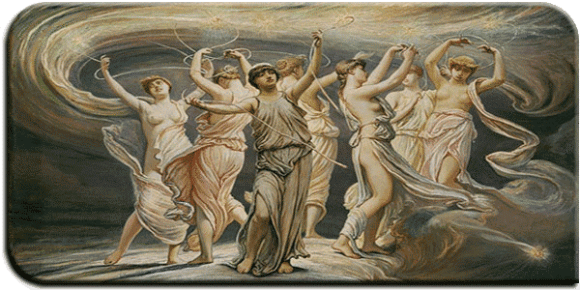

B&B services
- Weekly change of bed linen
- Change of towels three times a week
- Using Refrigerator
- Hair dryer and air conditioning
- TV and Internet
- Heaters (winter)
- Private parking
- Transfer Service (Extra)
Naples Airport Pompeii and Terminal F.S.
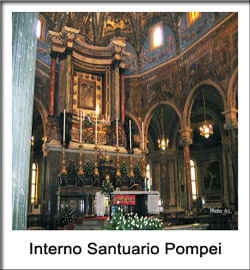
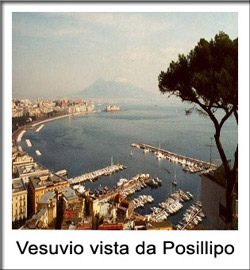
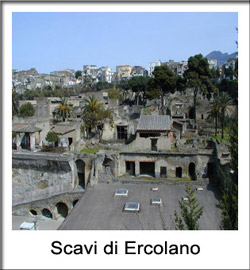
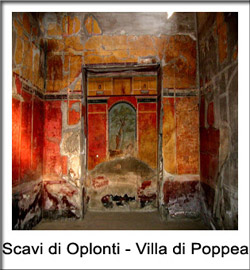
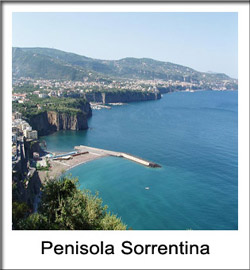
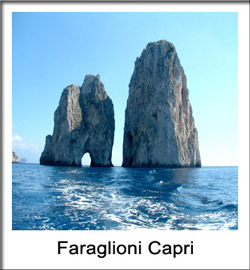
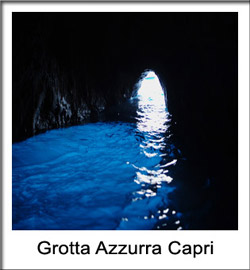
Localities to visit in Naples and surroundings - Bed and breakfast Pompei
The Le "Pleiadi" B&B is situated in a good position to visit the tourist attractions of the city and the other celebrated places like Vesuvius, archeological site of excavation of Herculaneum and Oplonti, Sorrento, Amalfi and Positano.
Pompeii
One quick glance at the lay-out of the city and a fundamental fact immediately catches one's eye: Pompeii, unlike Herculaneum and ancient Naples, is not the fruit of an organic design of city planners. In the regular town design two atypical nuclei stand out: one, roughly quadrilateral, around the "civil forum" and the other around the tiny "triangular forum" next to the theatres district. To those nuclei is linked the rest of the city which by contrast looks "new": all this enclosed within solid city walls.
This observation reveals the secret of the origins and development of Pompeii: its port on the mouth of the river Sarno is evidence of its Mediterranean vocation - from the earliest history - with respect to its vast hinterland which in time came to include Acerra, Nola, Nuceria, as the ancient historian Strabo attests.
On a bed of prehistoric lava, Pompeii is founded in the second half of the VIIth century B.C. with an organization effort that presupposes objectives of lookout and defence connected to the nature of the relations between the Greeks and the natives.
The natives, peaceful when first colonized, later matured notions of armed action when the Chalcidenses, who held defensive posts along the sea-coast, threatened to cut off for ever the peoples of Campania from access to the sea. Despite the documented existence of a Doric temple dating from the second half of the VIth century B.C. on the terrace of the triangular forum, and other indications that were held valid until only a few years ago, Pompeii was not a Greek city, even though it had been influenced by Greek culture ever since the most archaic epoch. In the light of the results obtained from the stratigraphic researches carried out in these last years, it appears that Pompeii, at the time of its foundation and its first development, was much more conditioned, politically, by the Etruscans than by the Greeks.
A "vertical section" of the city in the last decades of its life before the 79 A.D. eruption of Vesuvius, would offer a picture - in contrast with the calm of former times - of roads, inns, taverns bustling with people, brothels in full activity, stall keepers in the forum, the amphiteatre cram-full of people, slaves of an irrational passion for sport, always ready for a brawl, walls covered with election slogans in favour of this or that candidate, graffiti with names, quips, love messages everywhere.
House building in the meanwhile was capriciously spreading beyond the walls, it consolidated westwards in dismal phalansteries. Painting lost its capacity of perspective. The former articulation which can be seen in the vast cycles of paintings of the "Villa of the Mysteries" (Villa dei Misteri), is often reduced to nothing but commonplace and poor quality decoration.
In the last few years every possible effort has been concentrated on restoration but excavations have also been going on the city walls, bringing to light the walls from "Porta di Sarno" to "Porta di Nola" and beyond towards "Porta Vesuvius".
Stratigraphic research work has also been given a substantial boost.
The four-storey building that incorporates the walls, north of "Porta Marina", has been excavated while the diggings at the "House of Julius Polybius" (Casa di Giulio Polibio) have brought to light new and sensational discoveries.
The zones that still have to be excavated in the north-eastern area may hold some more unexpected surprises in store but at this point we can say that the "picture" of life in Pompeii, thanks also to stratigraphic research, has already been quite clearly defined.
For more infos you can visit the links about Pompeii in the section link.
Vesuvius
Mt. Vesuvius is the best known volcano on earth; it dominates the Bay of Naples with its characteristic cone. It is a typical example of a volcano in a volcano made by an outer broken cone, Mt. Somma (1133 metres) with a crateric belt most of which is destroyed. In it there is a smaller cone, the Mt. Vesuvius (1281 metres), divided by lowering named Valle del Gigante (Giants Valley), a part of the ancient caldron where in a later period, perhaps during the 79 A.D. eruption, the Gran Cono (Great Cone) or Mt. Vesuvius arose. The Valle del Gigante is still divided in Atrio del Cavallo on the west and the Valle dell'Inferno on the east. The Somma's ancient crater is well preserved as far as its entire northern part is concerned, in fact in historic times it was less exposed to the volcano's devastating violence, because it was well protected by the height of the internal face that has prevented the downflow of lava on its slopes. The slopes, which vary in their steepness, are furrowed by profound radial grooves produced by the erosion of the meteoric waters. The whole section is then characterized by dikes and fringes of dark volcanic rock. The old crater edge is a stream of summits called cognoli. While the height of mount Somma and its profile have remained the same for centuries, the height and the profile of the mount Vesuvius have suffered considerable variation, because of the following eruptions, with raisings and lowerings. Mt. Vesuvius is a characteristic polygenic mixed volcano, meaning that it is constituted by lava of different chemical composition (for example trachytes, tephrites, leucitites) and formed either by casting of lava or pyroclastic deposits. All the zones at the slopes of the mountain are formed by transported earth of lava mud which goes down from the steep slopes in the rainy seasons through deep and narrow grooves called channels or more commonly "lagni". The high embankments are formed by piles of lavic scoriae, which precipitated in incandescent state and spread towards the low slopes, proving precious for the vegetation thanks to their fertile material, rich in silicon and potassium. Proceeding along the rim of the crater, one can observe the whole extent of the southern part of the volcano and, during days with good visibility, it is possible to see the entire gulf of Naples, from the Sorrento peninsula to Cape Miseno, Procida and Ischia.
You can reach Mt. Vesuvius from Pompeii by the highway. Suggested exit: direction Naples - exit to Torre del Greco (you have to follow driving direction).
With public service vehicle like autobus, FS or circumvesuviana: direction Naples - stop Torre del Greco
For more infos you can visit the links about Pompeii in the section link.
Archeological site of excavation of Herculaneum and Oplonti
Ancient tradition connected Herculaneum with the name of the Greek hero Herakles (Hercules in Latin and consequently Roman Mythology),[1] an indication that the city was of Greek origin. In fact, it seems that some forefathers of the Samnite tribes of the Italian mainland founded the first civilization on the site of Herculaneum at the end of the 6th century BC. Soon after, the town came under Greek control and was used as a trading post because of its proximity to the Gulf of Naples. The Greeks named the city Herculaneum. In the 4th century BC, Herculaneum again came under the domination of the Samnites. The city remained under Samnite control until it became a Roman municipium in 89 BC, when, having participated in the Social War ("war of the allies" against Rome), it was defeated by Titus Didius, a legate of Sulla.
After the eruption of Mount Vesuvius in 79 AD, the town of Herculaneum was buried under approximately 20 meters (50-60 feet) of lava, mud and ash. It lay hidden and nearly intact for more than 1600 years until it was accidentally discovered by some workers digging a well in 1709. From there, the excavation process began but is still incomplete. Today, the Italian towns of Ercolano and Portici lie on the approximate site of Herculaneum. Until 1969 the town of Ercolano was called Resina, and it changed its name to Ercolano, the Italian modernization of the ancient name in honour of the old city.
The inhabitants worshipped above all Hercules, who was believed to be the founder of both the town and Mount Vesuvius. Other important deities worshiped include Venus, who was believed to be Hercules' lover, and Apollo.
You can reach the archeological site of Oplonti from Pompei by car driving to Torre Annunziata.
With public service vehicle like autobus, FS or circumvesuviana: direction Naples - stop Torre Annunziata
You can reach the archeological site of Herculaneum from Pompei by car driving on the highway in direction to Naples - exit Ercolano.
With public service vehicle like autobus, FS or circumvesuviana: direction Naples - stop Ercolano.
For more infos you can visit the links about Pompeii in the section link.
Sorrento
Sorrento is located on a tuff coast and is reflected in the Gulf of Naples, fascinating tourists and visitors, attracted by breathtaking views and landscapes. The town gives its name to the Sorrento Peninsula, a large area extended from Vico Equense to Massa Lubrense. This area, thanks to its geographical shape, suspended between the green hills and the blue of the seas, has always been a great attraction in the South of Italy. With its almost twelve thousands accommodations in over 150 accommodation facilities and over ten extra accommodations among which campsites, bed & breakfasts, residences, hostels, holiday villages and about thirty farm holidays the Sorrento Coast is one of the most popular destinations of the entire Campania region. It is also the ideal destination for Italian visitors and foreign tourists, that want to plan excursions to Capri, Ischia, Pompeii, Amalfi, Positano, Ercolano, Paestum and Vesuvius, places located at a distance of 50 Kilometres. Sorrento was first a Phoenician colony , after that it became a port frequented by Greeks for the commercial activity with Naples and with other southern cities. It was named by Greeks "Syrenusion" or "Syreon", that means Siren’s land; the Sirens were the mythological creatures, half woman and half fish, Homer talked about in his famous work "Odyssey". These creatures could fascinate sailors with their songs .
After the rule of Oscans and Sannites it was submitted by Romans. The Romans appreciated the beauties of this place so much that during the imperial period it was elected a holiday destination of patricians, as the numerous villas attest. It was the native country of Torquato Tasso. For so long Sorrento has exercised a particular charm which has attracted poets and literary men like Goethe, Lamartine, Stendhal, De Bouchard, Byron, D’Annunzio, Ibsen, Douglas, musicians like Rossini, Liszt, Mendelssohn, Wagner, painters like Pinelli, Fernet, Lindstrom, photographers like De Luca and the brothers Alinari, film directors like De Sica, Gallone and Mastronardo. Among the famous visitors of Sorrento we can remember also Enrico Caruso, Giacomo Casanova, Scipione Breislak, Marion Crawford, Charles Dickens, Herman Melville, Friedtich Nietzsche ed Axel Munthe. This coast town was included in the eighteenth-century among the main destinations of the Ground Tour and among the most significant Italian cities, visited by foreign intellectuals who wanted to study in depth the Italian history, art and culture.
If you have to reach Sorrento, it's advisable to use the public transport: in particular you should take the Circumvesuviana of Pompei Scavi-direction
to Sorrento, stop Sorrento.
For more infos you can visit the links about Pompeii in the section link.
Capri
You can choose to join the crowd and live unforgettable days sitting at the many bars in the "piazzetta" , shopping at the elegant boutiques in Camerelle Street or eating at the local restaurants in Capri, where the person sitting at the table next to yours may be a wealthy and famous one.
But you can also choose the peace and quietness of the streets in Anacapri or the solitary paths to the sea with breathtaking landscapes.
Welcome to Capri: 11 sq km of natural and artificial beauties. The Emperor Augustus was the first one to discover this magnificent place, it was the year 29 B.C. After him Tiberius and many others: Lenin, Mussolini, the Swedish doctor Axel Munthe and the factory owners Knupp. Each one of them left something to the island which has never stopped enchanting people.
Not to miss anything here is an itinerary by sea.
Let’s sail from Marina Grande, the port, towards Noth east, leaving the centre of Capri. Soon after we’ll get to Anacapri, covered by Mount Solaro its highest spot. The landscape is marked by terraced gardens, white houses and farmed land.
Here life has slower rythms that why it is becoming the ideal place for people loving peace and relax. It is here that Axel Munthe decided to stop at the end of the 18th century. Next to the ruins of an old roman Palace he built Villa St. Michele, a meseum-house which contains his collections. From we get to the Blue Grotto, it is only one of the 60 caves on the island, but obviously the most popular. Sometimes, in summer, you may wait even more than 1 hour to be able to visit it. The best time to see it and admire its colurs is after 17.00. At that time people from Capri and tourists usually swim there even if forbidden. Just above it, plunged in the green nature, you’ll see the ruins of Villa Damecuta, one of the 11 residences of Tiberius: it was the year 27 A.C and since then Capri has become the famous place it today. We are now in Cala Del Rio, a small bay with ancient Roman ruins.
The real attraction of this coastline is Marina Piccola, once old fishermen village, and since the 50s one of the most exclusive beaches. Famous people and wealthy pop stars own their villas here (Rocco Barocco, di Diego Della Valle). Here is located one of the best hotels in Capri as well: Hotel Punta Tragara with an amazing view over "the Faraglioni" rocks. Not far another famous house: Villa Curzio Malaparte, planed by the writer himself. The beauty of the scenery goes up to the Natural arch, a huge rock with a big central hole casued by erosion. The White grotto is our next stop: here the erosion has created stalactites and stalagmites with fantastic shapes. Going past the famous "salto di tiberio" where it is said the Emperor used to throw his victims, and Villa Jovis, the most spectacular of Tiberius’ villas, we are coming back to the port; here the bronze statue with the young boy seems to wave goodbye: our trip has come to an end.
If you have to reach Capri, it's advisable to use the public transport:
Circumvesuviana direction Sorrento - stop Castellammare di Stabia (you have to continue to dock)
Circumvesuviana direction Sorrento - sto Sorrento (you have to continue to dock)
For more infos you can visit the links about Pompeii in the section link.


